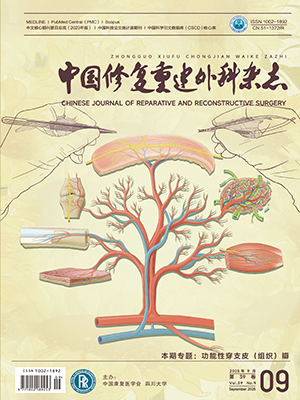Objective To investigate the behavior of rat calvarial osteoblasts cultured on chitosan-gelatin/hydroxyapatite (CSGel/HA) composite scaffolds. Methods The rat calvarial osteoblasts (the 3rd passage) were seeded at a density of 1.01×106 cells/ml onto the CS-Gel/HA composite scaffolds having porosity 85.20%, 90.40% and 95.80%. Cell number was counted after cultured for 3 days,1 week, 2 weeks and 3 weeks. Cell proliferation, bone-like tissue formation, and mineralization were separately detected by HE, von Kossa histological stainingtechniques. Results The CS-Gel/HA composite scaffolds supported the attachmentof seeded rat calvarial osteoblasts. Cells proliferated faster in scaffold withhigher porosity 90.40% and 95.80% than scaffold with lower porosity 85.20%. The osteoblasts/scaffold constructs were feasible for mineral deposition, and bonelike tissue formation in 3 weeks. Conclusion This study suggests the feasibility of using CS-Gel/HA composite scaffolds for bone tissue engineering.
Citation: ZHAO Feng,YIN Yuji,YAO Kangde,et al.. TISSUE ENGINEERING STUDY ON CHITOSAN-GELATIN / HYDROXYAPATITE COMPOSITE SCAFFOLDS——OSTEOBLASTS CULTURE. Chinese Journal of Reparative and Reconstructive Surgery, 2002, 16(2): 130-133. doi: Copy
Copyright © the editorial department of Chinese Journal of Reparative and Reconstructive Surgery of West China Medical Publisher. All rights reserved




